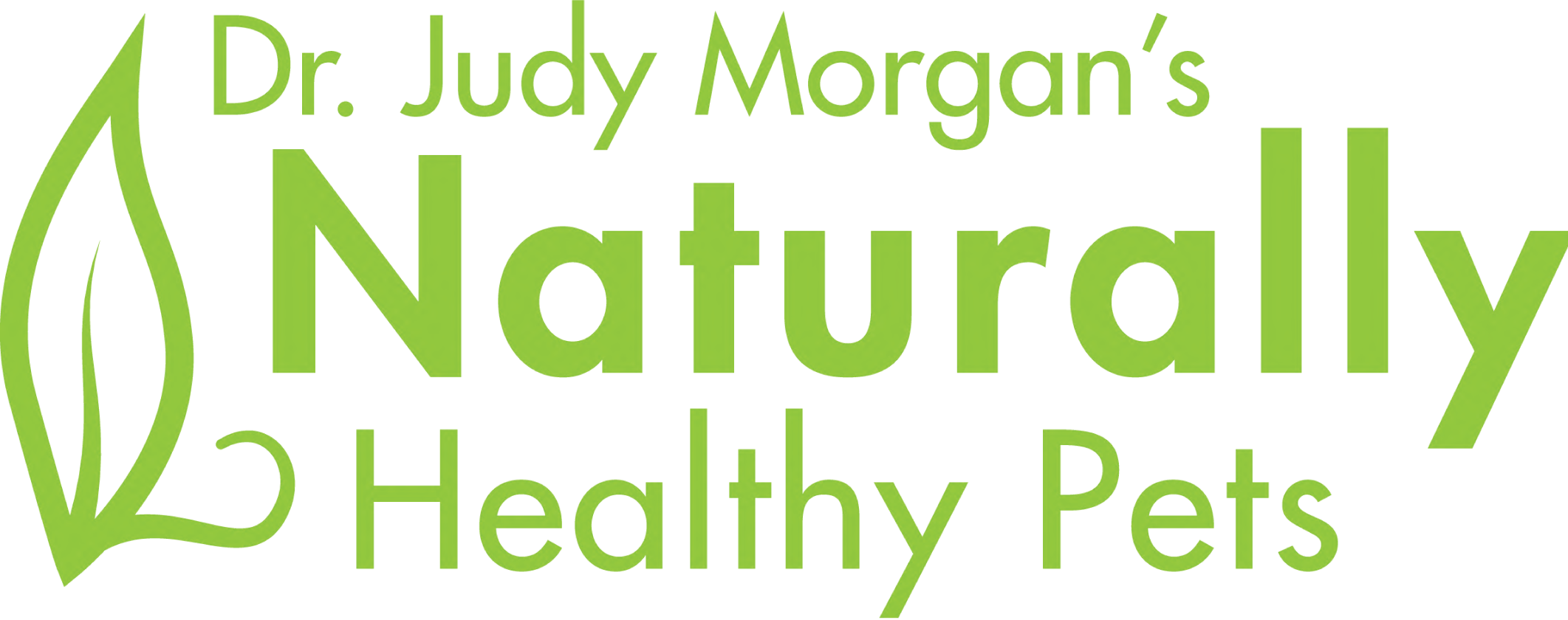Have you ever taken a close look at the ingredients panel on the package of a commercially made dog food? You may be grateful when looking at the list of vitamins and minerals that your pet’s food is “complete and balanced.” The Association of America Feed Control Officials (AAFCO) requires that all ingredients in pet food be listed on the packaging. However, you may need a dictionary or an internet browser to help decipher the long list of chemicals posing as vitamins and minerals in your pet food. This blog will explain the differences between natural and synthetic vitamins and why I recommend food made with the former and not the latter.
Why are synthetic vitamins and minerals added to dog and cat food?
To reach the “complete and balanced” label governed by AAFCO, pet food companies must prove that their foods contain certain levels of specific nutrients. Simply put, there are not enough nutrients in processed foods to prevent disease. Nutrients are lost in the heat processing of commercial pet food. AAFCO offers a prescriptive list of synthetic nutrients that can be added to pet foods to meet the “complete and balanced” requirement.
There are two ways to prove a food meets these standards. The first requires extensive testing on the nutritional content of the finished food and further testing to prove biological availability to the animal. This process, while the most accurate, is also expensive. The second option simply requires adding a predetermined amount of synthetic nutrients to the recipe. This method is used by almost all dry and wet food producers and is the cheapest and easiest option.
Even though a food is labeled as “natural,” the required statement “with added vitamins and minerals” is added because the vitamins and minerals are synthetic.
How are synthetic vitamins and minerals made?
Synthetic nutrients in pet foods are used as replacements for naturally occurring vitamins and minerals. Most of these compounds are lab-created by reacting organic or inorganic substances with acids, bases, or other reducing compounds. For example, the synthetic version of the amino acid Lysine, called L-Lysine monohydrochloride, is made by reacting ammonia, hydrogen cyanide, and mercaptaldehyde – poisons if ingested in their raw form. When making a synthetic nutrient, a shelf-stable form of the element is created, and these forms look very different from the natural state of the nutrient.
The form of the synthetic nutrient can make a difference in the formulation. For example, calcium is added to foods most commonly as calcium carbonate or calcium citrate. The latter is absorbed more easily but only contains 21% calcium. The former contains much more calcium but very little of it is absorbed by the body. And both types are affected by the other nutrients they’re consumed with. Without sufficient testing, it is hard to know exactly how much calcium your pet is receiving and assimilating from their processed food.
What are the most common vitamins and minerals added to commercially manufactured pet food?
- Choline Chloride is considered a synthetic B-complex vitamin. Natural sources include egg yolk, soy, cooked beef, chicken, and turkey livers.
- Calcium Panthenate is synthetic vitamin B15. Natural sources include organ meats, eggs, fish, shellfish, lobsters, soybeans and lentils.
- Thiamin Mononitrate is synthetic vitamin B-1. Natural sources include meats, poultry, whole grains, nuts, legumes, and brewer’s yeast.
- Riboflavin Mononitrate is synthetic B-2. Natural sources include oysters, lean meat, leafy vegetables, mushrooms, and asparagus.
- Pyridoxidine Hydrochloride is synthetic vitamin B-6. Natural sources include grains, spinach, green beans and cereals.
- Ascorbic acid is synthetic vitamin C. Natural sources of Vitamin C include strawberries, citrus fruits, turnip greens, cabbage, sweet potatoes, broccoli, carrots, peas, squash, and parsley.
- Cholecalciferol and methione are synthetic forms of vitamin D. Natural sources include sunlight, whole eggs, liver and salmon.
- Methadione Dimethylprimidinol Bisulfite is synthetic vitamin K. Natural sources include green vegetables such as kale, broccoli, spinach and collards.
- Dicalcium Phosphate and calcium phosphate are synthetic calcium. Natural sources include broccoli, almonds, chia seeds, sunflower seeds and kale.
- Iron proteinate, ferrous carbonate, and ferrous sulfate are synthetic forms of iron. Natural sources of iron include liver, kidney, lean meats, shellfish, fruits, nuts, whole grains, and leafy vegetables.
- Zinc sulfate is synthetic zinc. Natural sources include meats, fish, oysters and nuts.
- Copper oxide, copper proteinate, and copper sulfate are synthetic forms of copper. Natural sources include liver, oysters, lobster, mushrooms, nuts and seeds.
What are the disadvantages of using synthetic vitamins?
When ingesting synthetic vitamins through food, there are several disadvantages for the animal. None of the problems listed below occur with vitamins derived from whole foods.
- Quantity control - Synthetic vitamins are added to large vats of food in the processing, and quantity control can be questionable. The pet food industry is aware that certain minimum levels of vitamins and minerals are necessary to avoid devastating disease. But what about too much of a certain vitamin? Excess vitamins and minerals can also cause catastrophic disease, and even death. While some vitamins have regulated maximum levels, others do not. For example, the European Union (EU) and other European countries have upper limits for the amount of copper that can be added to pet food, while the United States does not. In 2023, AAFCO reaffirmed its guidelines for copper concentration after an expert panel concluded “there is lack of definitive evidence linking copper-associated hepatitis in dogs and the copper content in dog foods. (1) Europe takes a “guilty until proven innocent” approach to regulating drugs, vitamins, etc. while the US takes an “innocent until proven guilty” approach. The additives you see listed on your bag of food may not be present if the same food is sold in Europe or other parts of the world.
- Lack of “Co-factors” - Cofactors are nutrients and chemical compounds that frequently appear with certain vitamins and minerals in nature. These important substances play a vital role in helping pet’s bodies utilize that key nutrient. Without them, the nutrients may not be absorbed, may not be usable, or may cause damage. In a case study that looked at the use B vitamins in puppy food, puppies who were ingesting the synthetic version over time experienced hair and pigment loss, anemia, low white blood cell count and lethargy. (2) Additional synthetic B vitamins that were added did not fix the problems; however, supplementing with brewer’s yeast or liver – both natural sources of B vitamins – reversed the deficiency.
- “Peak and Drop” Phenomenon – This phenomenon occurs when synthetic vitamins improve health when initially ingested. Then over time, their efficacy sharply decreases because the synthetic version of the vitamin or mineral clogs cell receptors in the body that are used to assimilate the nutrient. Studies conducted on dogs with B6 deficiency showed that while adding the synthetic vitamin showed an initial uptick in hemoglobin levels, there followed a drastic decline into anemia. The control group, which was given brewer’s yeast along with the synthetic vitamin maintained normal hemoglobin levels throughout the study. (3)
- Potency loss during manufacturing - Studies show that when mixed with other food ingredients, certain synthetic vitamins and minerals quickly lose their potency. An example is the synthetic form of Vitamin K, Menadione Sodium Bisulfite. This vitamin has shown effectiveness when given orally as a supplement. However, it rapidly loses its potency when mixed with other ingredients. Because these nutrients are not always identical to forms found in nature, the body can’t utilize them the same.
- Adverse reactions – Synthetic nutrients can behave differently in the body than their natural counterparts. In some cases, the animal’s body may look at the synthetic vitamin as a foreign body and doesn’t recognize it as a food. In addition to getting no benefit from the added vitamin or mineral, inflammation and disease can occur because of this process.
- Synthetic vitamins are only a piece of the nutritional picture – Even if synthetic vitamins and minerals didn’t have any of the disadvantages listed above, they represent only a small percentage of the overall picture when feeding our pets. There are other substances such as glucosamine and probiotics that are not required by AAFCO that are very beneficial to a pet’s health.
How can I avoid synthetic vitamins in my pet’s food?
To completely avoid synthetic additives, making your own dog food at home is your best bet. There are many free recipes and classes available on our website that guide you through the process of complete and balanced home cooking. Adding back missing vitamins and minerals with supplements is another option but be sure that the supplements you choose are not made with synthetic versions. Raw food is your best bet for additive-free food in the commercial category. READ THE LABELS! Many of these diets contain some synthetic vitamins or minerals to fill the gaps that where whole food ingredients don’t provide enough. Another option is to add nutrient toppers that are made with 100% whole-food, nutrient-dense ingredients. Because kibble requires heat and pressure processing that destroys nutrients, it is very difficult to find dry dog food that hasn’t been fortified with synthetic vitamins. You are much more likely to
find these options in the freeze-dried and air-dried versions of food. Not all of these are free of synthetic vitamins and minerals, but all contain far more natural nutrients than kibble.
At best, synthetic nutrients allow dog food companies to meet the bare minimum for nutritional quality. At worst, they impart dangerous side effects and leave your dog deficient in essential vitamins, minerals, and amino acids. It will likely be pet owner education and consumer demand that will cause the industry to produce pet diets without these toxic vitamin and mineral additions. As manufacturers realize there is a consumer need and a willingness to purchase high-quality products made from whole foods and natural vitamins and minerals, they will respond by investing their billions in making higher quality and safer products.
Responsible pet owners will continue to seek out the latest nutritional information and support companies that ethically produce food. The solution to pet food safety and nutrition is not in the laboratory…” better living through chemistry” does not apply when it comes to pet food. Mother Nature knows best!
- https://www.avma.org/news/aafco-reaffirms-guideline-copper-levels-dog-food
- https://www.sciencedirect.com/science/article/abs/pii/S0022316623136510?via%3Dihub
- https://www.science.org/doi/10.1126/science.98.2554.520


